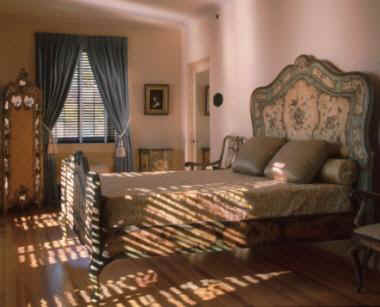 |
|
Blue Bedroom:
The bedroom suite is hand painted.
Sets of this style came from Venice and were brought back by American tourists as a
souvenir of their trip abroad.
This particular bedroom set was purchased by Mr. and Mrs. Ringling.
We do/do not know when or where it was purchased, or if it was placed
particularly in the Blue Room. |
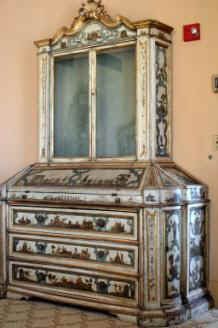 |
|
The secretary to the left of the door exiting to the loggia is hand painted and
decoupaged. Decoupage consists of cut-out prints which are glued onto the surface and
then embellished around the edges.
This piece was not original to the collection. It was purchased by the museum in 1949. |
Tower Bedroom:
|
The bed is Italian and dates from the 18th century.
It was not original to the house and was donated to the Museum in
1966.
The vanity is listed as painted. I do not believe any of the furniture in the Tower
Bedroom is decoupage.
The paintings in the rooms are as follows: |
|
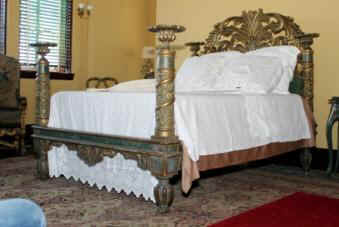 |
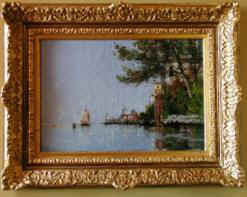
|
|
Venice French, 19th or 20th century Maurice Bompard
Bequest of John Ringling, 1936 |
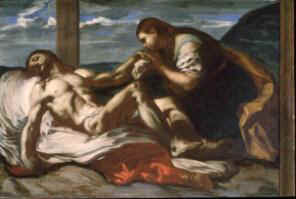
|
|
Piet Italian, 17th or 18th century
Follower of Francesco Solimna
Bequest of John Ringling, 1936 |
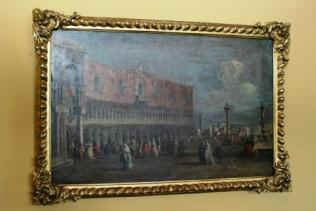
|
|
The Piazetta Towards the Palazzo Ducale Italian, 18th
century
After Francesco Guardi
Bequest of John Ringling, 1936> |
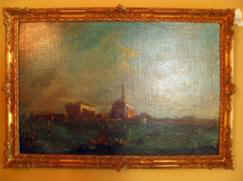
|
|
Church of S. Nicolo di Lido Italian, 18th century
After Francesco Guardi
Bequest of John Ringling, 1936 |
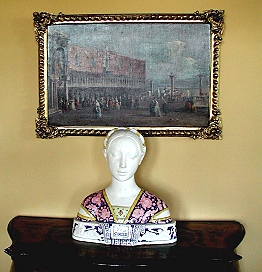
click to enlarge
|
|
And the final piece—the Luisa Strozzi bust.
As for the story of Luisa Strozzi, it became legend that she was pursued by Alessandro
de Medici and poisoned for spurring his advances. This story comes from the novel titled Luisa
Strozzi written in 1835 by Giovanni Rosini. In fact, while it does appear that Luisa,
a well-known beauty of her time, was pursued by Alessandro nine months prior to her death
in 1534, it was never determined who had poisoned her or why.
Our bust was donated to the Museum at an unknown date. It is not original to the Museum
or the home. |
ringlingdocents.org |